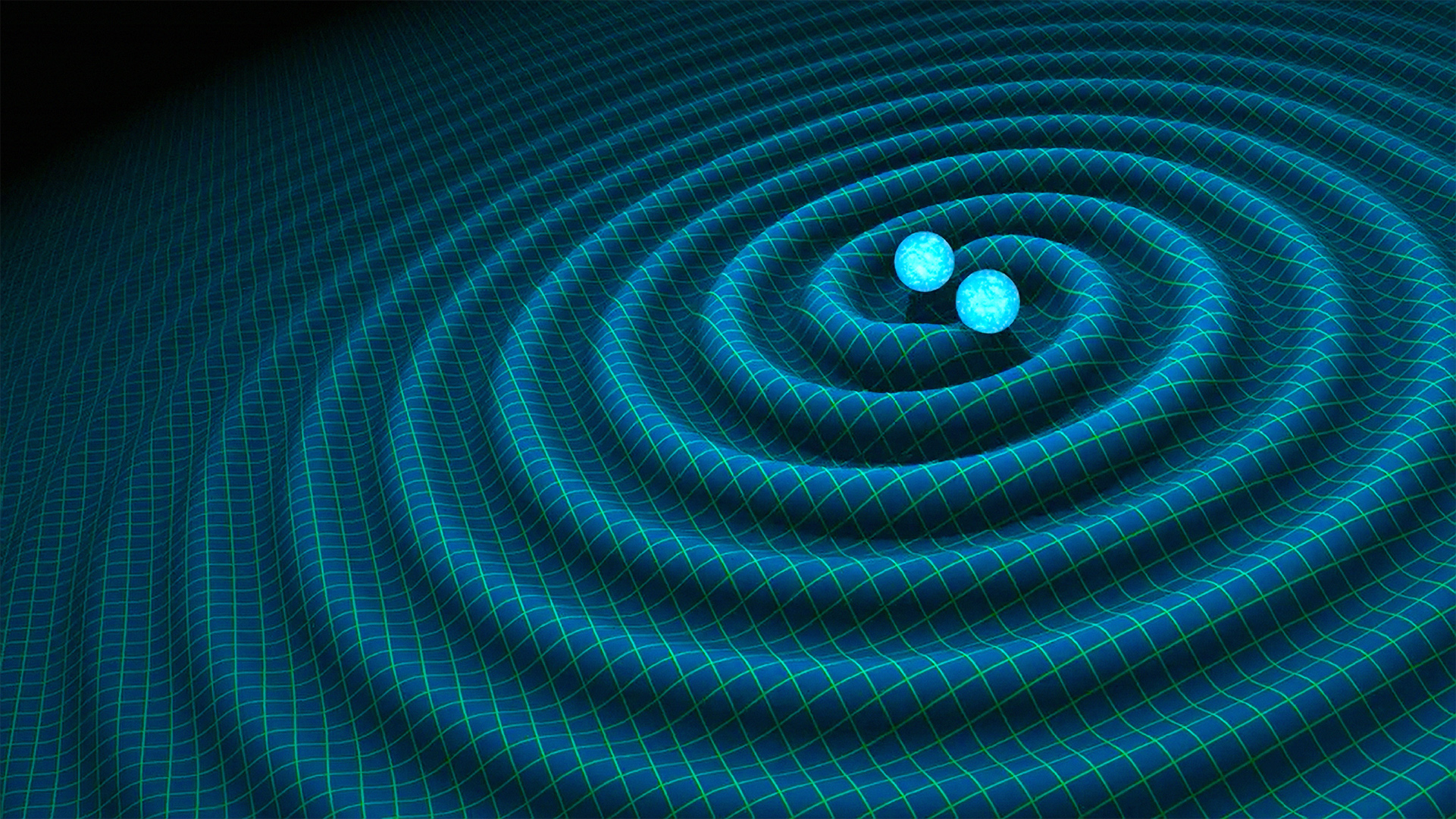Nobel Prize Win Helps Launch New Era of Gravitational Astronomy

The Nobel Prize is just the beginning for the new field of gravitational astronomy.
On Tuesday (Oct. 3), three researchers won the 2017 Nobel Prize in physics for spotting gravitational waves, the ripples in space-time first predicted by Albert Einstein a century ago.
The trio — Kip Thorne and Barry Barish of the California Institute of Technology and Rainer Weiss of the Massachusetts Institute of Technology — are founders of the Laser Interferometer Gravitational-Wave Observatory (LIGO) project, which made the first-ever direct detection of gravitational waves, in September 2015. (The LIGO team has announced three additional detections since then.) [Gravitational Waves: What Their Discovery Means for Science and Humanity]
LIGO's work is opening a new frontier just as Galileo Galilei did back in 1610, when he used a telescope to discover Jupiter's four biggest moons, Thorne said.
"Just as electromagnetic astronomy has thrived for four centuries, bringing us ever more amazing insights into the universe, so [too] we can expect the same of gravitational astronomy over the coming four centuries," Thorne said during a news conference at Caltech on Tuesday.
Gravitational waves are generated by the acceleration of very massive objects. These space-time ripples travel at the speed of light, but they don't get scattered or absorbed the way light does.
"The fact that this radiation is so penetrating — nothing stops it — makes it so that you can look for things that you have never seen before," Weiss said at an MIT news conference Tuesday. "You can look at things you know in a way that's new. That is really the big step forward."
Get the Space.com Newsletter
Breaking space news, the latest updates on rocket launches, skywatching events and more!
Combining gravitational-wave and electromagnetic observations of the same objects should be especially powerful, researchers have said.
LIGO's observations are already allowing researchers to probe difficult-to-study black holes; all four detections that have been reported to date involve pairs of these light-gobbling monsters merging together.
The project could also spot colliding pairs of superdense stellar corpses known as neutron stars, Weiss said. Indeed, it's possible that LIGO has already picked up a signal of such an event. During his remarks Tuesday, Weiss said the team will make an exciting announcement on Oct. 16. He stressed that he couldn't reveal the discovery yet, but he did tease it a little.
"We also expect to see the merger of neutron stars, and that was a thing that actually gave this field a certain credibility, when it was discovered that there were pairs of neutron stars in our galaxy," Weiss said. "And people stopped laughing at us when that was found out. Now, the big question is, how often does that happen, that two neutron stars smash into each other? Well, I won't say any more."

Many fast-spinning neutron stars, known as pulsars, likely emit gravitational waves all the time, Weiss added. Studying such "continuous waves" would reveal a great deal, not only about pulsars but also about the space-time ripples themselves and how they move, he said.
And then there's perhaps the biggest gravitational-wave prize of all.
"We may be able to look back to almost the beginning of time — just after the Big Bang, which we cannot do with light," said astrophysicist Brian Schmidt, vice-chancellor of the Australian National University, referring to the gravitational waves scientists think were generated during the period of "cosmic inflation."
"This is just the beginning," Schmidt, who won the Nobel Prize in physics in 2011 for helping to discover the universe's accelerating expansion, said in a statement. (Schmidt shared the prize that year with Saul Perlmutter and Adam Riess.) "I cannot wait to see what they discover next."
Though researchers are currently looking for such inflationary gravitational waves, actually finding them may be the work of a future generation, Weiss said. (In 2014, a team of astronomers announced the detection of these inflationary waves, but other research teams later concluded that the signal was probably caused by cosmic dust.)
Of course, gravitational-wave astronomy is still in its infancy, so there's no telling what scientists will find in the future.
"I await expectantly some huge surprises in the coming years," Thorne said.
Follow Mike Wall on Twitter @michaeldwall and Google+. Follow us @Spacedotcom, Facebook or Google+. Originally published on Space.com.
Join our Space Forums to keep talking space on the latest missions, night sky and more! And if you have a news tip, correction or comment, let us know at: community@space.com.

Michael Wall is a Senior Space Writer with Space.com and joined the team in 2010. He primarily covers exoplanets, spaceflight and military space, but has been known to dabble in the space art beat. His book about the search for alien life, "Out There," was published on Nov. 13, 2018. Before becoming a science writer, Michael worked as a herpetologist and wildlife biologist. He has a Ph.D. in evolutionary biology from the University of Sydney, Australia, a bachelor's degree from the University of Arizona, and a graduate certificate in science writing from the University of California, Santa Cruz. To find out what his latest project is, you can follow Michael on Twitter.









